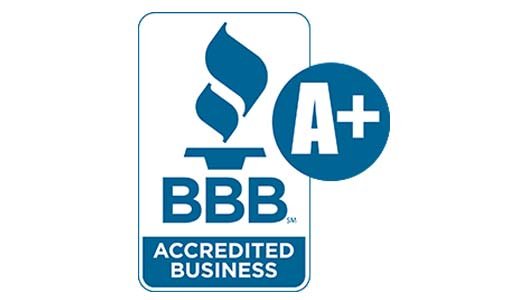Lawsuit Loans
Lawsuit loans and settlement loans can provide much needed cash, but you need to be aware of the pitfalls of such loans.

TheLawFirm.com (TLF) Lawsuit Loans
Lawsuit Loans, the good and bad by Jeremy Fietz, managing partner of TheLawFirm.com.
The good, The Bad and The Ugly
Updated March 14, 2019
Author: Daniel Gala
Even for injured plaintiffs with strong legal claims against those who caused them harm, the years it frequently takes to navigate the court system in order to receive a favorable verdict or settlement agreement can leave many facing financial ruin. As medical bills, legal costs, and everyday expenses mount, oftentimes in conjunction with an inability to work due to injury or illness, a tragically high number of these injured parties will resort to personal bankruptcy.
As an alternative, an increasingly large number of plaintiffs are turning to so-called “lawsuit loans” in order to help bridge the gap financially between the urgent need for funds now and the high probability that they will be receiving a large sum of money at a later date. These lawsuit loans can be used to help mount a better legal case, for example by funding expert witnesses or investigators, or they can be used to help make ends meet while the legal process plays out.
While some plaintiffs in difficult financial situations will find it necessary to obtain a lawsuit loan in order to provide much-needed short-term cash, it is important to be aware of some of the potential pitfalls related to such loans. Because they are largely unregulated as compared to other forms of lending instruments, lawsuit loans sometimes involve exorbitant interest rates and hidden fees, so it is important to do your homework to make sure you know what you’re getting into.
In order to help you get started, we’ve put together this primer on Lawsuit Loans: The Good, The Bad, and The Ugly.
Lawsuit Loans: The Good
As stated above, lawsuit loans can provide much-needed financial liquidity at a time when many plaintiffs are facing hardship due to medical costs and loss of employment income, not to mention the stress and expense of mounting an effective legal case. Because a lawsuit loan only is repaid if the plaintiff/borrower receives a verdict or settlement in his or her favor, lenders of lawsuit loans typically employ lawyers who will look into one’s case and determine if it is a likely winner. The higher the perceived chances that your case will result in a verdict or settlement in your favor, the greater the likelihood that you will be approved for a lawsuit loan and the better the terms you are likely to be offered.
Here are some things that you should consider when looking into a lawsuit loan:
1. Always borrow as little money as possible up front to avoid larger interest payments down the line.
While offers of more money up front can be tempting, remember that all of this money will need to be paid back...with interest. And, since you won’t be able to repay your loan until your case settles or a verdict in your favor is finalized and paid, interest will be accruing on the outstanding balance the entire your case is pending.
An important component of borrowing as little money as possible is to borrow only what you truly need. According to a report by CNBC, lenders who specialize in making lawsuit loans see a surge of business during the winter holidays, as borrower-plaintiffs take out money to pay for presents and other extras. While borrowing money to help pay for nonessential items can be alluring, with lawsuit loans featuring interest rates up to 98% annually, unnecessary borrowing and frivolous spending can lead to a trap of inescapable debt.
2. Carefully review the terms offered by multiple lenders to compare interest rates and other fees, as there can be a large difference from lender to lender.
According to the same report by CNBC, interest rates on lawsuit loans range widely from lender to lender, with some charging as much as 98% annually, while others imposed rates as (relatively) low as around 27%. While both of these rates far exceed even the average credit card interest of 16.6% per annum, there clearly is a tremendous difference between the 98% and 27%, so do your homework and compare the terms offered by multiple lenders. And don’t forget to check the fine print for hidden fees and other concealed charges.
3. Use organizations such as the Better Business Bureau to conduct background research on a lender’s reputation and other borrowers’ experiences.

While lawsuit loans remain fairly unregulated as compared to other loan types, there do exist a number of consumer watchdogs, advocacy groups, and government agencies that potentially can provide useful information about lenders, including their background and any history of customer complaints. Simply taking the time in advance to research a company’s business practices can prevent a great many headaches down the road.
Lawsuit Loans: The bad & the ugly
While the notion of up-front cash, particularly for those who have suffered serious, debilitating injury, can be an alluring prospect, unfortunately the terms of many lawsuit loans are more reminiscent of the financial shenanigans of payday lenders than the altruistic purposes they sometimes purport to serve. A great many lenders of lawsuit loans prey upon vulnerable individuals, many of whom are teetering on the verge of bankruptcy, giving borrowers the cash they so direly need up front but then charging exorbitant fees and interest rates on the back end, oftentimes leaving the borrower-plaintiffs worse off financially than they were in the first place.
It is no secret that one of the biggest hurdles facing the average person seeking legal recourse through the courts is the sheer cost of hiring an attorney and the support staff necessary to mount an effective case. In personal injury and products liability cases, in which the defendants often are deep-pocketed corporations with either in-house counsel or large outside law firms on retainer, the financial prospects can appear so daunting that many plaintiffs opt not to bring a case at all. This often makes the prospect of a taking out a lawsuit loan an appealing one.
However, with many lawsuit-loan lenders being controlled by speculative, profit-driven investors and operating under a relative lack of government oversight and regulation, one needs to be appropriately skeptical in order to protect oneself and family from overly onerous terms.
Here are some important things to remember:
1. Lawsuit loans ARE NOT the same as a lawyer’s contingency agreement.
Given the language used to market lawsuit loans, one could be forgiven for confusing a lawsuit loan with a lawyer’s contingency agreement, except that the lawsuit loan offers the plaintiff some money up front, as well. In many cases, this could not be further from the truth.
In a typical contingency agreement, a lawyer will agree to take on a client’s case for little or no money up front, instead agreeing to take a certain percentage of any monetary awards received on the back end. In these kinds of contingency agreements, the lawyer assumes a great deal of the risk: if the lawyer does not win or settle the case, the client does not pay. And, in the event the lawyer does succeed in getting the client a cash award, the attorney typically receives about one-third of the total amount, plus reimbursement for expenses incurred, such as court fees.
Similarly, a lawsuit loan only is paid back if you receive monetary compensation for your legal claim. However, a key difference is that a lawsuit loan accrues interest, and, with rates running as high as 98% per year, by the time one does receive just compensation for his or her injuries, much of that money will be going to repay the lawsuit loan.
2. Even at the lower end of the interest-rate spectrum for lawsuit loans, interest adds up quickly.
To give a concrete example of just how much one can end up paying in interest on a lawsuit loan, The New York Times has described the following situation:
“Ardec Funding, a New York lender backed by a hedge fund, lent $45,000...to a Manhattan lawyer hired by the parents of a baby brain-damaged at birth. The lawyer hired two doctors, a physical therapist and an economist to testify at...trial. The jury ordered the delivering doctor and hospital to pay the baby $510,000. Ardec is collecting interest at an annual rate of 24 percent, or $900 a month, until the award is paid.”
In other words, the borrower-plaintiff in this scenario owed $10,800 per year in interest alone on the original lawsuit loan of $45,000, meaning that in a little over four years—hardly an unheard of amount of time for litigation to last—he or she would owe in interest 100% of the original loan amount, with the loan’s principal balance plus lawyers fees and other costs still to be deducted on top of that. The end result can be surprisingly little money left for the plaintiff-borrower.
3. The costs of lawsuit loans are not limited to interest rates. Remember to check for hidden fees and other expenses.
Despite the high interest rates, the costs of a lawsuit loan to the borrower-plaintiff often are not limited to interest charges.
“In some cases, borrowers may also pay broker fees on advances,” according to the CNBC report. “The website of Cash4Cases says it pays ‘referral fees’ of up to 25 percent.”
4. Remember that the lenders of lawsuit loans are not charity organizations. Often, they are speculative enterprises funded by profit-driven investors, so it is important to protect oneself accordingly.
The concerns over lawsuit loans are not new, and yet as the industry continues to grow, it has remained largely unregulated, meaning that lawsuit loans and the lenders who make them are not covered by the same kinds of vigorous consumer protections that govern other types of loans and lenders. This means that borrower-plaintiffs need to be even more careful when dealing with lawsuit loans than with other kinds of credit.
For example, far back as 2010-11, The New York Times published a series of articles highlighting the risky nature of lawsuit loans for borrowers and describing how lawsuit loans had become an area of speculation for wealthy investors.
“Large banks, hedge funds and private investors hungry for new and lucrative opportunities are bankrolling other people’s lawsuits, pumping hundreds of millions of dollars into medical malpractice claims, divorce battles and class actions against corporations — all in the hope of sharing in the potential winnings,” The Times reported articles in 2010.
Yet, in nearly a decade since The New York Times’ reports, the lawsuit-loan industry largely has managed to avoid government oversight, as the wealthy, politically powerful forces profiting off the practice have pushed elected officials throughout the country to maintain the regulatory leniency they have so far enjoyed.
“Companies that advance money to plaintiffs involved in personal injury lawsuits are campaigning in state capitals for legislation making clear that their growing industry is not subject to usury limits on interest rates or other state laws that protect borrowers,” according to The New York Times. “Instead, the lawsuit lending companies want to adopt a separate and less rigorous set of protections. Since February [2011], they have persuaded legislators in at least five states, including New York, to introduce bills based on the industry’s own proposals.”
Perhaps unsurprisingly, the most prominent voices opposing such measures have not been plaintiff and consumer advocates seeking to protect the vulnerable from unscrupulous speculators, but rather chambers of commerce and insurance-industry lobbyists who fear an increased number of lawsuits brought against their members and clients should plaintiffs have access to the funds to mount an effective case.
Conclusion
All of this is not to say that all lenders of lawsuit loans are evil or that lawsuit loans do not sometimes provide an important source of urgently needed funds. It is simply to highlight the importance of being diligent in understanding all of the terms up front and of borrowing as little money as possible in order to limit one’s financial liability at the back end.
Sources:
CNBC
The New York Times
The New York Times
Call To Speak With An Experienced Attorney:
1-888-612-8313
Legal Disclaimer: Please consider this general advice. One should consult with his or her own financial advisor or CPA for advice as to the financial ramifications of a particular situation. We are not familiar with your personal finances or legal situation and therefore cannot offer specific advice. Additionally, your individual state or country likely has its own rules and regulations applicable to these situations. Therefore, if you expect to receive a monetary settlement or verdict and are looking to borrowing on that potential settlement or verdict, TheLawFirm.com recommends consulting with your own financial advisor, or CPA before receiving the funds in order to plan appropriately.
Related Articles
About TLF

About TheLawFirm.com (TLF)
TheLawFirm.com is a group of award winning attorneys, paralegals and associates from the legal profession who’s main goal is to educate and represent their clients with the utmost expertise, respect and trust.
We also work closely with a large group of experts from the medical profession so we can draw upon their expertise, in order to present as much accurate information relating to various mass tort and personal injury lawsuits as we can.


